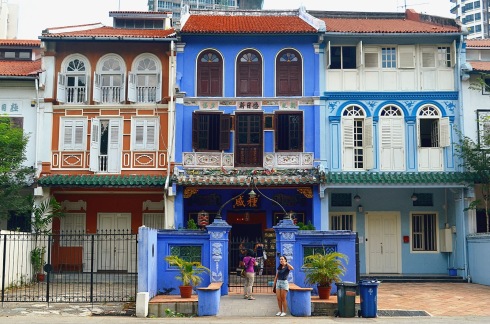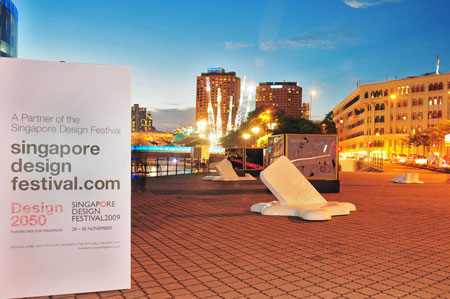The heritage of a country is strongly associated with the nation’s history. According to Ang (2001, p. 3), “heritage is not just what must be ‘preserved’ and ‘saved’; it is also what can be ‘built’ and ‘created’ out of a critical and creative engagement with the myriad intertwining histories that have made up the nation”. Based on this statement, it is important to understand the national and cultural history of a country in order to critically analyse and create future innovative improvements.
Singapore is well-known for its tiny city-state with a melting pot of cultures and busyness. One of the prominent key history can be traced back to 1819 when the British arrived to this island. At that time, Singapore was located at the center of shipping route between India and China, thus caused Singapore to be a busy trading port and attracted a massive inflow of immigrants from all over Asia (Leyl 2015).
These people from various cultural background have left blueprints in building Singapore’s unique national identity. One of the most noticeable feature is the distinct design style that can be seen in its architecture building, facilities, places, and system. For example, the shophouses in Singapore was influenced by the “bamboo houses” of Southern China (Lee 2015).

Singapore has been trying to develop its creative industries as they realised the importance of design and creative talents to retain them moving up the value chain as they can not lean on their natural resources. DesignSingapore Council has been developing design strategic in order to maximally enhance the creative industry in Singapore. According to the second strategic blueprint of the DesignSingapore initiative, design goes beyond a mere invention. “It is material, visual, as well as a way of thinking. It is aspirational and visionary” (DesignSingapore Council 2008, p. 6).
DeisgnSingapore Council has organised some events that raise the awareness of design as well as to engage the audience, such as Singapore Media Festival, Singapore Food Festival, and one of the biggest annual national design event, Singapore Design Week (DesignSingapore 2015).
Regarding to this, DesignSingapore Council has also proposed the design initiative that was established in 2005, which is Singapore Design Festival.

This Festival was aimed to be a platform that would “bring together designers, design clients and consumers, and was the outward manifestation of Dsg’s Design Development and Promotion initiatives” (DesignSingapore Council 2008, p. 46). One of the festival program was Utterubbish, the anchor event in 2007 that serves to be a platform of sustainable design that consists of conference, workshops, and exhibitions presented by 15 International designers and 15 Singapore design firms.

The other event was Vivocity Student Design Contest, a competition that engaged the participants to develop an installation for Vivocity which can be a piece of art or furniture and the top 20 submissions were displayed at the festival.
Analysing from these two events, I think these are some of the most significant keys in developing design culture. Firstly, Utterubbish was aimed to educate and inspire people through exhibition of ideas and the second event, a Design Contest in which students had the freedom and were challenged to explore their creativity. According to the public survey, 80% percent of the people felt that the Festival contributes to raise the design culture in Singapore (DesignSingapore Council 2008).
Just as Graeme Davison notes that heritage is “an unstable and contested idea, as must be any idea that attempts to capture the things we count as valuable in our collective life” (Davison in Ang 2001, p. 11), I think design culture in Singapore is possibly growing to be a cultural identity that can be inherited to future generations as they try to keep exploring creativity, analysing its interweaving histories as well as indulging those histories and the national heritage within the design outcome in order to preserve the existing culture.
References:
Archer, N. 2008, utterubbish’ at the 2007 singapore design festival, designboom, viewed 19 January 2017, <http://www.designboom.com/design-fairs-events/utterubbish-at-the-2007-singapore-design-festival-2/>.
Ang, I. 2001, ‘Intertwining Histories: Heritage and Diversity’, The annual history lecture history council of New South Wales, Sydney.
DesignSingapore 2015, ‘Design: The Singapore Story, Part 3 of 6, A city lively with events, 365 days’, Design News, viewed 18 January 2017, <https://www.designsingapore.org/who_we_are/News/design_news/15-09-10/Design_The_Singapore_Story_Part_3_of_6_A_city_lively_with_events_365_days.aspx>.
DesignSingapore Council 2008, Dsg-II: Strategic Blueprint of the DesignSingapore Initiative, DesignSingapore Council, Ministry of Information, Communications and the Arts, Singapore.
Hays, J. 2008, ‘ETHNIC GROUPS, MINORITIES AND RACISM IN SINGAPORE’, Facts and Details, viewed 19 January 2017, <http://factsanddetails.com/southeast-asia/Singapore/sub5_7b/entry-3733.html>.
Lee, J. 2015, ‘5 types of shophouses in S’pore that you definitely didn’t know of’, Mothership.SG, viewed 19 January 2017, <http://mothership.sg/2015/02/5-types-of-shophouses-in-spore-that-you-definitely-didnt-know-of/>.
Leyl, S. 2015, ‘Singapore at 50: From swamp to skyscrapers’, BBC News, viewed 18 January 2017, <http://www.bbc.com/news/magazine-31626174>.
UNKL347 @ Singapore Design Festival 2009, bejanakultur, viewed 19 January 2017, <https://bejanakultur.wordpress.com/2009/12/20/unkl347-singapore-design-festival-2009/>.

I strongly agree about maintaining a strong hertiage, where design needs to be related back as it is an opportunity to regain and recognise Singapore’s cultural values using historial references. As it has been mentioned before “The past is a prototype”. There is a clear definition in this blog about maintaining the historial culture and the innovation to create new ideals to improve the nation. A national’s identity will never be lost, if we take into consideration of understanding and having knowledge of the cultural’s background, history and its value.
To understand a cultural’s history, it can be easily be forgotten, since the upcoming generation will need to be interested and to acknowledge the existence of how their nation was formed. And from then, they would be able to functionally develop their creations that will be suitable in this modern time. It made me think TWICE about how historial referencing in order to continue a nation’s identity, can be a suitable tool when designing for the future.
LikeLike